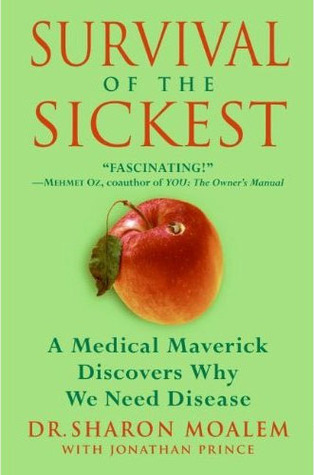More on this book
Kindle Notes & Highlights
Read between
September 6 - September 18, 2019
So to be crystal clear: everything out there is influencing the evolution of everything else. The bacteria and viruses and parasites that cause disease in us have affected our evolution as we have adapted in ways to cope with their effects. In response they have evolved in turn, and keep on doing so. All kinds of environmental factors have affected our evolution, from shifting weather patterns to changing food supplies—even dietary preferences that are largely cultural. It’s as if the whole world is engaged in an intricate, multilevel dance, where we’re all partners, sometimes leading,
...more
By the way, the next time you get your cholesterol checked, make a note of the season. Because sunlight converts cholesterol to vitamin D, cholesterol levels can be higher in winter months, when we continue to make and eat cholesterol but there’s less sunlight available to convert it.
Guess what happens when you’re wearing sunglasses? Much less sunlight reaches the optic nerve, much less warning is sent to the pituitary gland, much less melanocyte-stimulating hormone is released, much less melanin is produced—and much more sunburn results. If you’re reading this on the beach with your RayBans on, do your skin a favor—take them off.
Recent genetic studies bear this out—in terms of common genetics, some dark-skinned North Africans are probably closer to light-skinned Southern Europeans than they are to other Africans with whom they share skin color.
When clover has a bad year—not enough rain or sunshine, or too much rain or sunshine—it protects itself by limiting the size of the next generation of predators. It increases production of formononetin and prevents the birth of baby grazers by sterilizing their would-be parents.
Because these insects only have Latin names, let’s call the spider Thane of Cawdor and the wasp Lady Macbeth.
Former bacteria aren’t the only microbes we’ve married. Researchers now believe that as much as a third of your DNA is from viruses. In other words, our evolution hasn’t only been shaped by adaptation to viruses and bacteria—it’s probably been shaped by integration of viruses and bacteria.
Suddenly, it’s clear that genes don’t have discrete jobs at all—there wouldn’t be nearly enough genes to produce all the proteins necessary for human life if each gene only had one job. Instead, single genes have the capacity to produce many, many different proteins through a complex process of copying, cutting, and combining instructions. In fact, like a casino dealer who never stops, genes can shuffle and reshuffle endlessly to produce a huge array of proteins. There’s one gene in a type of fruit fly that can produce almost 40,000 different proteins!
Today, we know that at least 8 percent of the human genome is composed of retroviruses and related elements that have found a permanent place in our DNA—they’re called HERVs, or human endogenous retroviruses.
One species of lizard is born with a long tail and large body or a small tail and small body depending on one thing only—whether their mother smelled a lizard-eating snake while pregnant. When her babies are entering a snake-filled world, they are born with a long tail and big body, making them less likely to be snake food.
Essentially, animals with a greater risk of being eaten evolve to live shorter lives—even if they aren’t eaten. Here’s how—if a species faces significant environmental threats and predators, it’s under greater evolutionary pressure to reproduce at an early age, so it evolves to reach adulthood faster. (A shorter life span also means a shorter length of time between generations, which allows a species to evolve faster—which is important for species that face a lot of environmental threats; that’s one of the things that helps rodents develop resistance to poisons relatively quickly.)
CHILDBIRTH IN HUMANS is riskier, is longer, and certainly seems more painful than it is in any of our genetic cousins. Ultimately, that can be traced to two things—crossword puzzles and marching bands.
things. First, that life is in a constant state of creation. Evolution isn’t over—it’s all around you, changing as we go. Second, that nothing in our world exists in isolation. We—meaning humans and animals and plants and microbes and everything else—are all evolving together. And third, that our relationship with disease is often much more complex than we may have previously realized.


